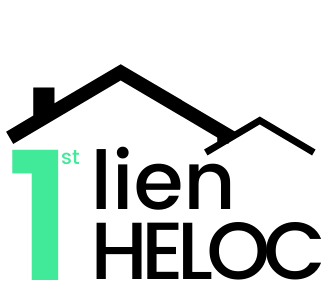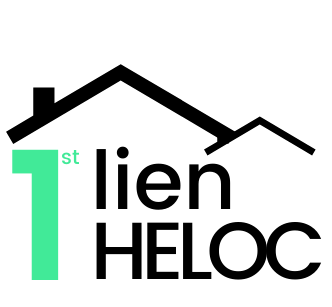Interest Calculation Types & Why It Matters
Updated as of January 2, 2024 | FirstLienHELOC.com
Mortgage Interest vs. HELOC Interest Calculation
The majority of people need a loan to purchase a home. Unless you are financially independent, you will need to borrow money from a bank for a majority of your home’s value. Subtracting the down payment you will be required to make, you likely expect the remainder of what you owe to be paid out over fixed monthly payments for the next few decades. For example, a 30 year loan is paid out in 360 fixed monthly payments.
What a lot of people don’t realize is exactly how much money they will pay in interest over the life of their loan. While an interest rate may seem low, the way that mortgage interest calculates adds up over the life of the loan. Because of the interest calculation, a traditional mortgage loan borrower can end up paying nearly the same amount of interest as what the home cost to begin with. This means you could have bought two homes for what a 30 year mortgage will cost, just in interest!
There are alternatives to traditional mortgages that many people don’t realize. These options may save you literally thousands of dollars in interest paid, but it is important to understand exactly how interest is calculated.
They way that interest is calculated actually has much more of an impact on how much you pay than the annual interest rate. There are situations where you can agree to a higher interest rate and only pay a fraction of TOTAL interest payment when compared to a different type of loan.
Mortgage vs. HELOC: What's the Difference?
A mortgage is when you borrow money to purchase or refinance your home. Typically, this is a fixed interest rate, though adjustable rate mortgages are out there. The term of the loan can be anywhere from 15 to 30 years.
With a mortgage, every payment you make reduces the amount that you owe on the loan. The only way that the loan amount would increase is if you refinance and take out your equity as cash.
Another type of home loan is a home equity line of credit or a HELOC. While this loan has a maximum amount, the amount owed will fluctuate over time. You can make payments to reduce the line and also borrow more money at any time.
The payments on a HELOC are not fixed because they recalculate depending on the amount borrowed.
In addition to the fixed versus varying balance and payments, another huge difference is in the interest. The interest calculation is vastly different on a mortgage versus a HELOC. Let’s take an in-depth look at the interest calculations between the two.
Interest Calculation on a Mortgage
A conventional mortgage calculates interest using a method known as compound interest. When you first take out the loan, the entire amount owed is calculated in advance and then divided into fixed monthly payments. However, the amount of payment is divided between principal and interest.
At the beginning of your loan, most of your monthly payment will go to interest and not the principal. That’s because the amount of interest recalculates, and you must pay the interest first, with the rest of the amount going to reducing your principal.
Let’s say you have a loan for $150,000 at 4.5% interest for 30 years. The 4.5% is the annual percentage rate or APR. In your first year, you will pay $6,750 in interest (4.5%).
For your very first payment, you’ll pay $562.50 in interest, which is $6,750 (annual amount) divided by 12 (months in a year). The remaining amount of your payment calculates based on what it would take to pay off that loan in 30 years. In this case, you’ll have a principal payment of $197.53, for a total payment of $760.03.
As you can see, you’ll pay far more in interest than in principal. This will be true for many of your payments until you’re about halfway through the loan. Only at that point will more be applied to principal than interest.
For the next payment, the calculation happens again. This time, you only owe $149,802.47 because of the principal portion of your previous payment. The 4.5% applies to the remaining balance and divided by 12 to arrive at the amount of interest you owe that month.
Fees Paid on a Conventional Mortgage
If you take out a mortgage, you will also see “APY” disclosed. This is the Annual Percentage Yield, and it is different from APR.
Conventional mortgages often have fees associated with them, such as origination fees, closing fees, and other charges from the bank. Banks usually wrap these into the total amount of the loan.
If you had paid cash for your house, you wouldn’t have paid these fees. The APY calculation treats these fees as a cost you pay to borrow the money, like interest. So APY gives you a better idea of your “effective” interest rate over the life of your loan when you factor in these additional fees.
Interest Calculation on a HELOC
The average daily balance is calculated as the total balance for each day in the billing cycle, divided by the total number of days.
A HELOC is a mortgage line of credit, more like a revolving line of credit. Because most people are familiar with this calculation for a credit card, let’s take a relatively straightforward example of calculating the average daily balance.
At the beginning of the month, you start with a balance of $1,000 on your credit card. On the 5th day of the month, you make a payment of $600. On the 23rd day of the month, you charge $125 to your credit card.
Your average daily balance calculates as follows:
Days 1 – 5: $1,000 balance
Days 6 – 23: $400 balance ($600 payment applied)
Days 24 – 30: $525 balance ($125 charge made)
The calculation of your average daily balance would look like this:
([$1,000 x 5 days] + [$400 x 18 days] + [$525 x 7 days]) = $15,875
$15,875 / 30 days in cycle = $529.17 average daily balance.
When you calculate the interest owed for that month, you multiply your average daily balance times the interest rate and the number of days in the cycle. If your interest rate is 7.5%, the amount of interest owed would be:
$529.17 x .075 x 30 / 365 = $3.26
With a HELOC, each month your payment will recalculate. You’ll owe at least the interest amount from your average daily balance. But the big difference is that any payments you make will reduce your average daily balance for that billing cycle.
Fees Paid on a First Lien HELOC
First Lien HELOCs have a reputation for being lower fee – and in general, this can be true, but requires additional understanding.
When financing a home through any type of loan product, most lending institutions include “closing costs”, which might include fees like:
- down payment (if new purchase)
- loan origination fees
- appraisal fees
- credit reports
- tax services
- title services and insurance
- surveys
- government recording charges
- transfer taxes
- interest rate buy down fees
- others not listed here
Most of which do still apply to a First Lien HELOC. Where the fees will differ often comes down to property taxes. Because First Lien HELOCs do not require escrow, a borrower may simply pay their property taxes when they are due instead of including them monthly as part of your principal and interest payment.
Differences in the Interest You Will Pay
Because of the difference between compound interest and average daily balance, borrowers can end up saving a lot.
Scenario #1: Making a Principal Payment
You have some extra cash, and you want to apply it to your home loan. With a conventional mortgage, you can make a principal reduction payment and direct your bank to apply the entire amount to the principal. However, this does not change your monthly payment.
When your interest recalculates the following month, you will have less principal owed. The amount of interest owed would change compared to not making the payment, but the monthly payment is the same. The impact will not be until the end of the loan, with it paying off sooner.
With a HELOC, applying a large payment has an immediate impact. Your average daily balance would decrease that day and every day going forward, reducing the amount of interest owed.
Scenario #2: Accessing Cash When You Need It
You have equity in your home after making payments for several years. Now you want to use $25,000 in equity to make some home improvements.
In order to do this with a conventional loan, you would need to refinance your house to get the cash. You would need to pay any origination fees, as well as other closing costs. The term of the loan would “start over,” and the interest would calculate monthly on the new, higher loan amount.
With a HELOC, you have access to the equity immediately. You can draw on the line of credit when you need it.
The other difference between the refinance and drawing on a HELOC is that with the refinance, you are stretching the additional amount borrowed over the entire term of the loan. Your $25,000 in home equity will now accrue interest for anywhere from 15 to 30 years. And, as previously noted, you will end up paying far more in interest.
With a HELOC, you have the flexibility to pay back that additional amount borrowed at any time. You can make additional payments as you are able to and pay it off sooner.
Replacing Your Mortgage With a HELOC
Homeowners can use the interest calculation on a HELOC to their advantage. A conventional mortgage can be replaced in its entirety with a first lien HELOC, allowing you to make payments to reduce your principal from Day 1. As needed, you can also access the equity in your home for an emergency fund, home improvements, or other unexpected expenses.
With a first lien HELOC, borrowers can pay off their loans faster and pay less in interest. To learn more, contact First Lien HELOC today.
Achieve Financial Freedom
Sign up on FirstLienHeloc.com to get connected with a licensed lender who can deliver an all-in-one 1st Lien HELOC. They’ll walk you through the application process and help outline your budget, your numbers, and exactly how much you can save by replacing your mortgage.

